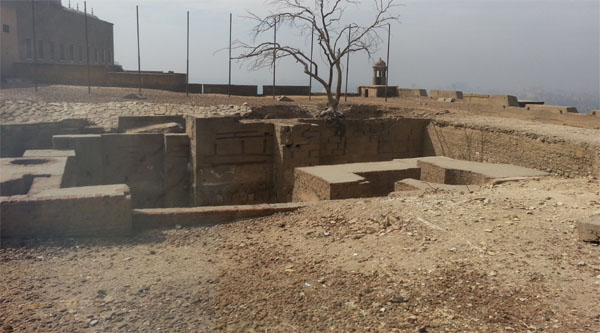Ablaq Palace: description, facts, history, photo
4.1 / 5 190 ReviewsAddress
Location: Inside the Citadel of Saladin, Caro
Accessibility
Not wheelchair friendly
The most famous of al-Nasir Muhammad's palaces at the Citadel, it had four two-iwan qa`as arranged in a row and overlooking the city. This palace was less ceremonial, and composed of 2 halls facing each other, the qa’a plan that was used in Mamluk and Ottoman residential palaces of Cairo. Between a huge dome covered with green tiles and supported by a number of columns, the larger northern iwan was oriented to the northwest breezes, facing the smaller southern iwan. Both had large windows with iron grills, overlooking the cemetery to the south and the whole city and its environs to the west and north.
A description of this palace, written shortly after it was built, says that the walls were constructed of black and yellow stone (hence the name ablaq, or “striped”). This palace was modeled after the Ablaq Palace that Mamluk ruler Baybars constructed in Damascus in 1264. Al Nasir had stayed there and was very impressed by it. He brought stonecutters from Damascus so that this Ablaq Palace would be built correctly. This Palace was used for audiences and receptions. The walls inside were decorated with marble and gold mosaic, detailed in mother-of-pearl and colored paste. The floors were of marble. The ceiling was gilt with lapis lazuli. The windows were filled with colored glass. (Cairo. The Family Guide. Lesly Lababidi)
This palace has been recently excavated, together with some of the famous granite columns. Al-Qasr al-Ablaq communicated with 3 other palaces, 2 built higher than the rest and reached by stairs. The palaces all had facades of striped yellow and black stone, and interior communications between the private apartments of the sultan and the harem. Inside, the palace had marble dadoes of various colors while the floor was paved with imported white marble. Glass mosaic with mother of pearl and painting decorated the upper walls, as well as large gilded inscriptions. Some remains of these can be seen in the excavated parts. The gilded iron window grills were surmounted by other windows decorated with colored Cypriot glass.
Beneath the Citadel, on the site of Baybars’ palace of Justice, al-Nasir established the tablakhana, a palace where the royal ceremonial orchestra performed at intervals throughout the day.
